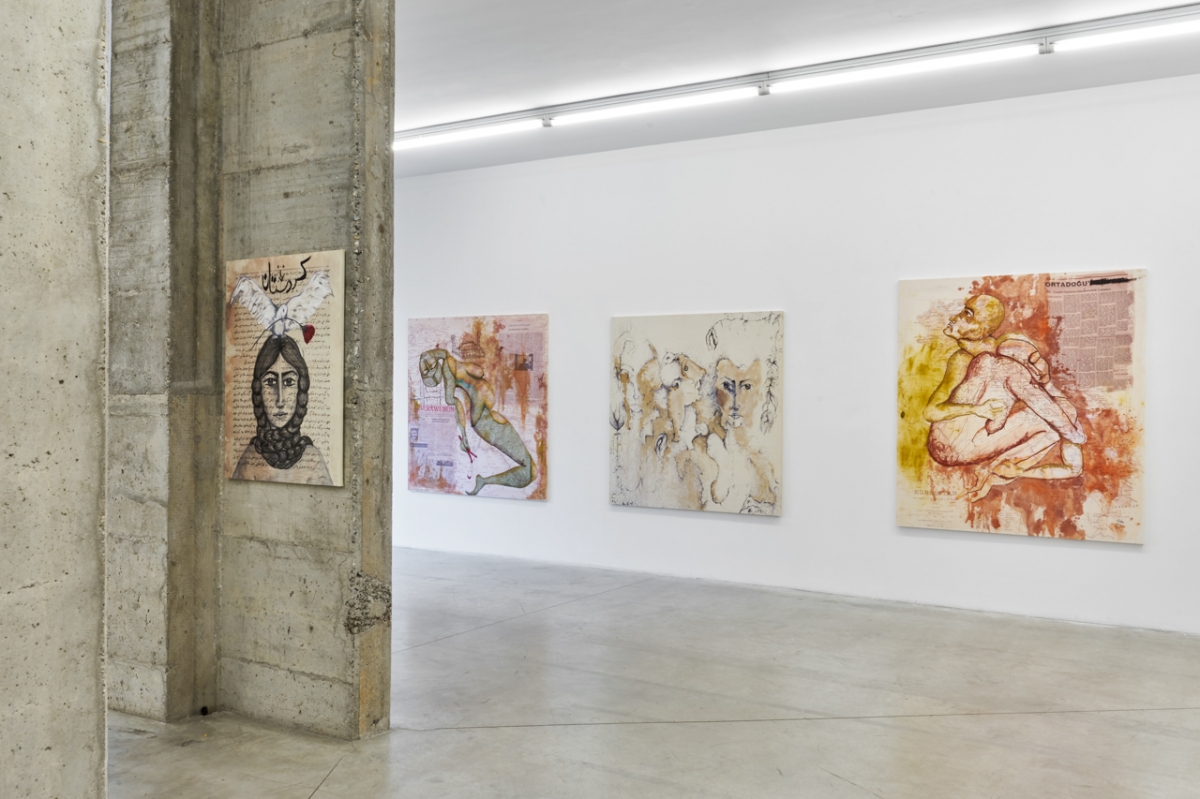I cookie ci aiutano a fornire i nostri servizi. Utilizzando tali servizi, accetti l'utilizzo dei cookie da parte nostra.
Prison N°5
Zehra Doğan
opening 27.10.2021 at 18.00-21.00
28.10 - 08.03.2021
texts by Elettra Stamboulis e Rischa Paterlini
PROMETEO GALLERY Ida Pisani
Via G. Ventura 6 - Milano
On Wednesday 27th October 2021, from 6 to 9 pm, the exhibition titled Prison No. 5 by Zehra Doğan (born in Diyarbakir in 1989) will open in the two spaces of Ida Pisani’s Prometeo Gallery (Via Ventura 6, Milan), a year after the first solo show of the Kurdish artist in an Italian gallery.
Diyarbakir’s Prison no. 5, in Turkish Kurdistan, is infamously popular. Considered a hole, a tunnel, a circle of hell, it is a detention centre that has provoked a swift action by many humanitarian organisations throughout the decades. It is one of the prisons where Zehra Doğan has spent part of her imprisonment: 2 years, 9 months, and 8 days, which she has served fully, only to have posted a drawing on Twitter.
Even during the endless procedure following the incarceration due to her crimes of opinion Zehra did not stop painting, drawing, and writing. She used her hands to create acts of political, cultural, and artistic resistance. She employed her strong network of activists to publish her works, realised illegally with any material at her disposal, including her menstrual blood and that of her comrades outside of prison. The goal of imprisonment for crimes of opinion is to silence voices, remove her from other people’s gazes, and to make them forget her face.
The raw material of the real-time images already shown at the Berlin Biennale reinterpret and reprise the originals that she produced behind bars; she did so by changing their format. Prometeo Gallery’s exhibition wishes to act as a magnifying glass on the bodies and histories of the women who are still detained in Prison no. 5.
These works, never exhibited before and now exposed in the two venues of the Gallery, are inspired by that period, by the solidarity with her fellow inmates, by deprivation, but also by the courage of those women, some of whom are mothers to children who grew up in prison.
They are realised on rugs, canvases, newspapers, and Kurdish maps by using biological fluids and natural concoctions: the same that Zehra Doğan could use in prison, together with a ballpoint pen, the only tool allowed to her at the time.
With the excuse of drawing on the back of the letters that she was allowed to receive and to send, the artist managed to send out some of her drawings, contained in the graphic memoir Prison no. 5 (edited by Becco Giallo in 2021), and recently exhibited at PAC in Milan.
“Here we have the ‘privilege’ of entering the cells of Prison no. 5 – writes Elettra Stamboulis in the preface of the book – and in the prison of Tarsus, of accessing the moment of Zehra’s writing and painting. We are in front of a historical document, as well as artistic”.
Now the artist has finally got a way – as she herself stated – to retrace that period without constraints or limitations, to express herself in large formats and with different materials available to her. An essential and cathartic experience in order not to forget that cell “where I feel so small – writes Zehra – but at the same time to overcome it and feel truly free”.
BIO
From September 2020, Zehra Doğan – Kurdish with a Turkish passport – was awarded numerous prizes, among which the “Ipazia Performing Arts Prize for Female Excellence – international section” in Genoa (2020), the “First Prize Carol Rama” in Turin (2020). She was included in Art Review’s “Power 100”, among the 100 most influential personalities in contemporary art, and she became part of the Taguchi Art Collection, in Japan. In September 2020, Zehra Doğan was part of the Belin Biennale, and a year later, her works were exhibited at the Maxim Gorki Theater.
The media and the publishing houses have fought over her story. Following the issuing of special laws in Turkey, in 2016, Doğan was accused of terror propaganda for spreading news about the injustices suffered by the Kurdish people, and was arrested and sentenced to 2 years, 9 months, and 22 days in jail.
Without ever surrendering, Zehra has continued to produce woks inside prison and to make people talk about her story. In fact, the cultural world – and not only – has fought against her incarceration and has supported the artist: from human rights associations to English Pen, and Amnesty International, to artists like Ai Weiwei and Banksy (who made a mural in her honour in New York); from London’s Tate Modern, to New York’s Drawing Center, and in Italy, the Museum of Santa Giulia in Brescia, to Milan’s PAC, which have exhibited her works to introduce them to the world.











































